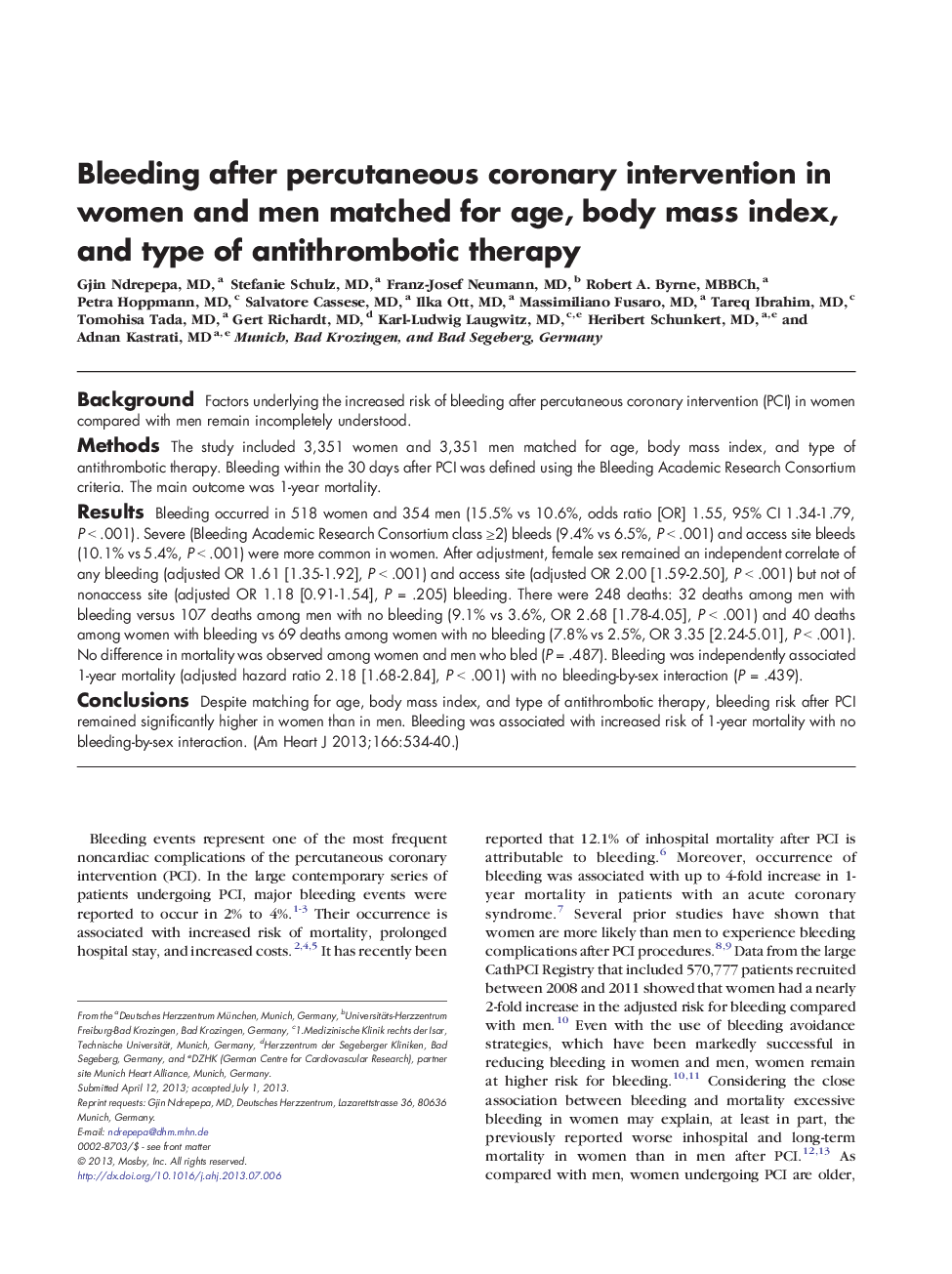| کد مقاله | کد نشریه | سال انتشار | مقاله انگلیسی | نسخه تمام متن |
|---|---|---|---|---|
| 5928768 | 1167796 | 2013 | 7 صفحه PDF | دانلود رایگان |
BackgroundFactors underlying the increased risk of bleeding after percutaneous coronary intervention (PCI) in women compared with men remain incompletely understood.MethodsThe study included 3,351 women and 3,351 men matched for age, body mass index, and type of antithrombotic therapy. Bleeding within the 30 days after PCI was defined using the Bleeding Academic Research Consortium criteria. The main outcome was 1-year mortality.ResultsBleeding occurred in 518 women and 354 men (15.5% vs 10.6%, odds ratio [OR] 1.55, 95% CI 1.34-1.79, P < .001). Severe (Bleeding Academic Research Consortium class â¥2) bleeds (9.4% vs 6.5%, P < .001) and access site bleeds (10.1% vs 5.4%, P < .001) were more common in women. After adjustment, female sex remained an independent correlate of any bleeding (adjusted OR 1.61 [1.35-1.92], P < .001) and access site (adjusted OR 2.00 [1.59-2.50], P < .001) but not of nonaccess site (adjusted OR 1.18 [0.91-1.54], P = .205) bleeding. There were 248 deaths: 32 deaths among men with bleeding versus 107 deaths among men with no bleeding (9.1% vs 3.6%, OR 2.68 [1.78-4.05], P < .001) and 40 deaths among women with bleeding vs 69 deaths among women with no bleeding (7.8% vs 2.5%, OR 3.35 [2.24-5.01], P < .001). No difference in mortality was observed among women and men who bled (P = .487). Bleeding was independently associated 1-year mortality (adjusted hazard ratio 2.18 [1.68-2.84], P < .001) with no bleeding-by-sex interaction (P = .439).ConclusionsDespite matching for age, body mass index, and type of antithrombotic therapy, bleeding risk after PCI remained significantly higher in women than in men. Bleeding was associated with increased risk of 1-year mortality with no bleeding-by-sex interaction.
Journal: American Heart Journal - Volume 166, Issue 3, September 2013, Pages 534-540
